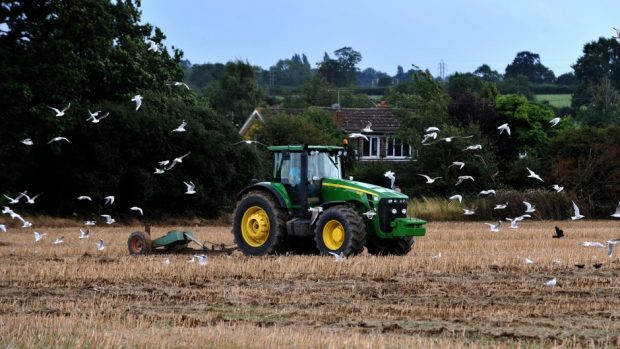The number of people employed on agricultural holdings is at the lowest level on record, according to government figures.
The Scottish Government’s June 2016 Agricultural Census reveals a 3% drop in the number of people working on farms and crofts to 63,400 – the lowest number since records began in 1982.
NFU Scotland director of policy, Jonnie Hall, said farm businesses were “pruning back on full-time labour” in response to the halving of farm incomes in the past four years. Instead, they were opting to use family, part-time labour, machinery rings and contractors.
Other findings from the census paint a mixed picture for Scottish agriculture – the acreage of cereals grown decreased, while increases were seen in potatoes, sheep, pigs and poultry.Cereals acreage was back 3% to 1.067million acres representing the lowest area grown since 2010.
Barley was back 7% to just under 710,000 acres, wheat remained more or less the same, and oats was up 22% to just over 76,000 acres.
The area of fallow land increased for the second year by 25,000 acres to 106,000 acres.
The potato sector showed signs of a bounce back with acreage up 7% to 68,000 acres, however this was the second lowest area grown since 1994. Fruit and vegetables acreage was also up 3% and 9% respectively.
In the livestock sector, cattle numbers remained at around 1.8million – the third lowest level since the 1950s.
Sheep and pig numbers on the other hand were up for the third year in a row to 6.8million and 330,000 respectively. Poultry numbers were also up 8% to 14.1million birds.
The census also revealed that 23% of land was rented – a similar level to 2015 – however there was a fall in 1991 Act secure tenanted land of about 115,000 acres and an increase in short duration limited tenancies. The total area of rented land was the lowest on record with an estimated 6,587 holdings having tenancy arrangements, down 22 on last year.
In all, 80% of Scotland is agricultural land and there are approximately 51,900 agricultural holdings.
Rural Economy Secretary, Fergus Ewing, said government would use the findings from the census to influence the development of policy and funding for agriculture.
He said: “Overall the statistics highlights the importance of resilience and planning within our farming businesses and supply chains. The Scottish Government continues to take action to support Scottish agriculture that provides certainty and stability and drives the rural economy.”
